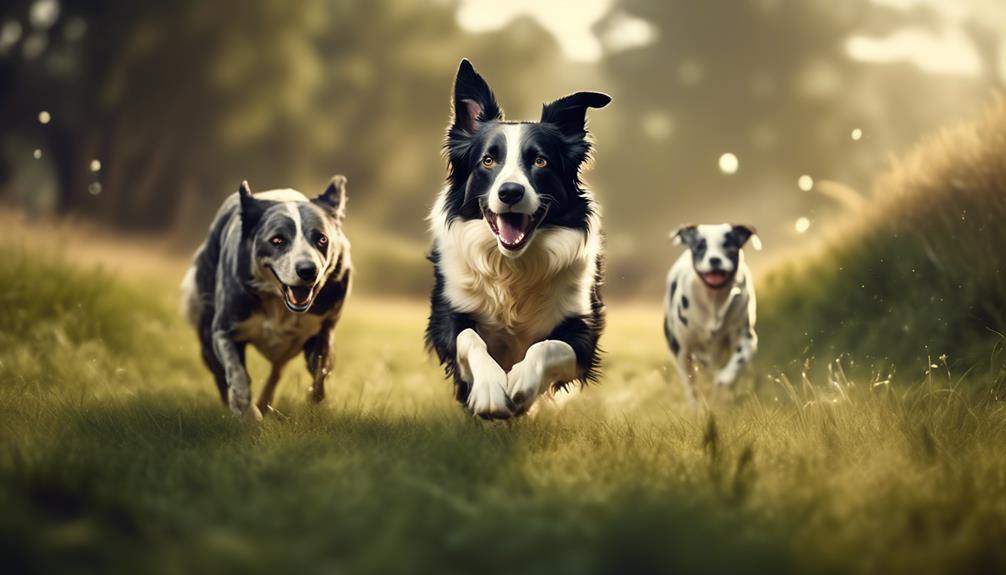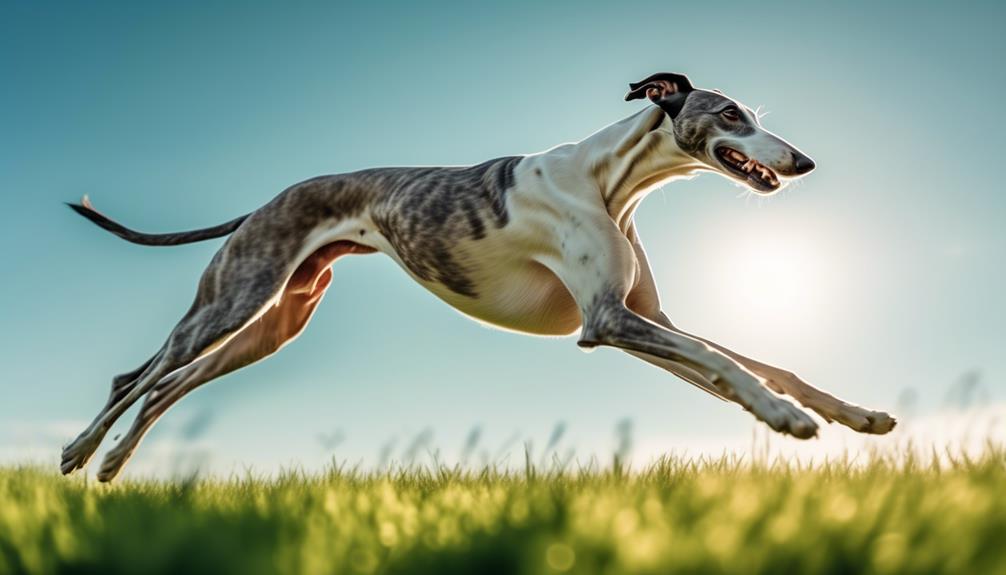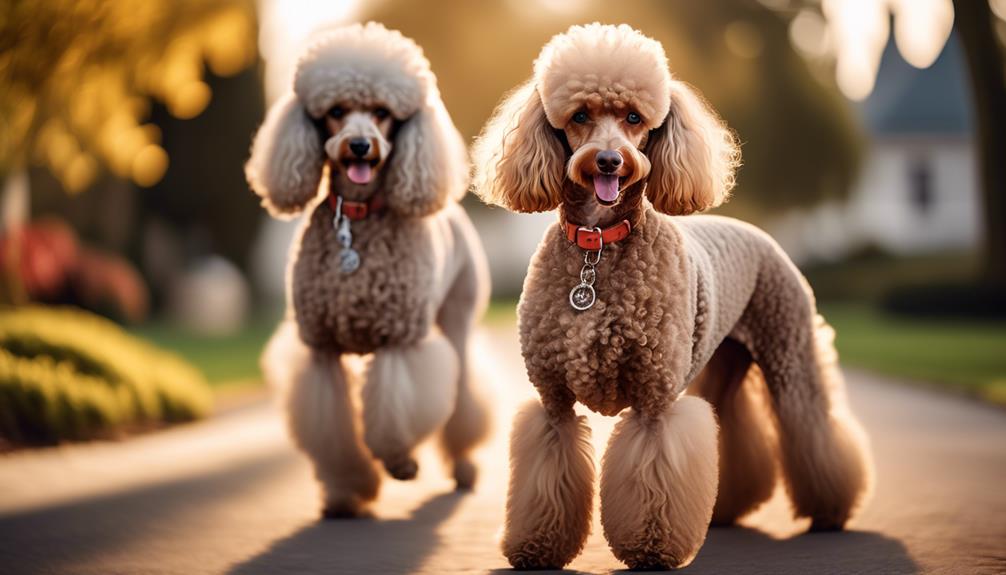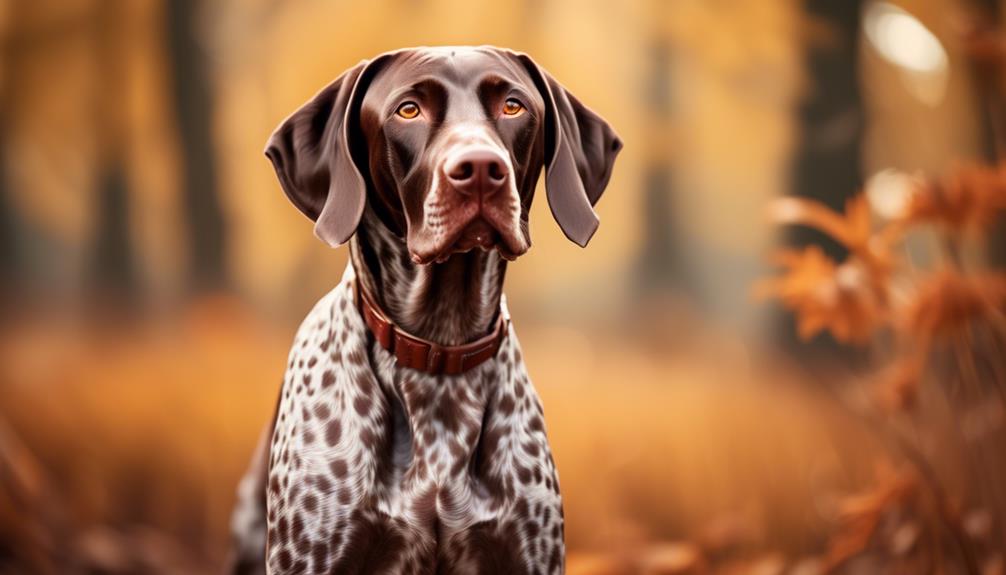What Are the Healthiest Dog Breeds With Long Lifespans?

The healthiest dog breeds with long lifespans include Australian cattle dogs and Chihuahuas. These breeds have resilient genetics that contribute to their overall health and longevity. Additionally, their lifestyle choices, such as regular exercise and a balanced diet, also play a significant role in keeping them healthy and extending their lifespan.
Key Takeaways
- The Australian Cattle Dog, Chihuahua, Australian Shepherd, and Poodle are dog breeds known for their long lifespans.
- Regular physical and mental stimulation through activities like exercise and obedience training is important for these breeds' overall health and longevity.
- Certain health issues are common in specific breeds, such as cardiac issues and eye conditions in Chihuahuas and the need for regular exercise in Australian Shepherds.
- German Shorthaired Pointers and Shiba Inus require an active lifestyle and regular physical activity to thrive and maintain their well-being.
Australian Cattle Dog
The Australian Cattle Dog, known for its active and medium-sized physique, boasts an impressive average lifespan of 12-16 years. This makes them one of the healthiest dog breeds with long lifespans. In fact, the longest living dog on record was an Australian Cattle Dog named Bluey, who lived to the remarkable age of 29 years.
Australian Cattle Dogs are generally healthy and have an average life expectancy that exceeds many other breeds. Their small size allows them to live a long and active lifestyle. However, it's important to note that like all dogs, they require proper care and attention to maintain their health and well-being.
These dogs thrive on physical and mental stimulation. Their active lifestyle contributes to their overall well-being, keeping them fit and mentally sharp. Regular exercise and playtime are essential to ensure they remain happy and healthy.
Australian Cattle Dogs are highly intelligent and require mental challenges to prevent boredom. Engaging them in activities such as obedience training, agility courses, and interactive toys will keep their minds stimulated.
Chihuahua

Chihuahuas, weighing only 5-6 pounds, are a tiny toy breed known for their long lifespan of 12-18 years. Despite their small size, Chihuahuas are generally healthy and happy when properly cared for. However, there are a few health concerns that owners should be aware of.
- Cardiac issues: Chihuahuas are prone to heart problems, such as mitral valve disease and heart murmurs. Regular check-ups with a veterinarian can help monitor their heart health and catch any issues early on.
- Patellar luxation: This is a condition where the kneecap dislocates from its normal position. Chihuahuas have a higher risk of developing this condition due to their small size. Symptoms may include limping or skipping while walking. Surgical intervention may be necessary in severe cases.
- Eye conditions: Chihuahuas are susceptible to various eye problems, including cataracts, glaucoma, and dry eye. Regular eye examinations and proper eye care can help prevent and manage these conditions.
Despite these potential health concerns, Chihuahuas have a lower risk of certain health issues common in larger dogs. Their small size means they're less likely to suffer from joint problems and obesity. With proper care, including regular exercise and a balanced diet, Chihuahuas can live long and healthy lives.
Australian Shepherd

Moving on to the next breed, Australian Shepherds are an active and hardworking breed with an average lifespan of 12-15 years. These dogs are known for their historical ties to the Wild West and thrive on working alongside farmers. With their active lifestyle, Australian Shepherds are able to maintain a long and healthy life, making them one of the breeds with a longer lifespan.
| Australian Shepherd | |
|---|---|
| Lifespan | 12-15 years |
| Activity | High |
| Exercise | Running, hiking, swimming |
| Temperament | Intelligent, energetic, loyal |
Australian Shepherds are highly active dogs that enjoy engaging in activities such as running, hiking, and swimming. They require regular exercise to keep them physically and mentally stimulated. Despite their age, Australian Shepherds tend to remain active, making them dynamic companions for many households.
To ensure the health and longevity of an Australian Shepherd, it is important to provide them with a balanced diet, regular exercise, and mental stimulation. Regular visits to the veterinarian for check-ups and vaccinations are also crucial for maintaining their wellbeing. With their high energy levels and need for mental and physical stimulation, Australian Shepherds are best suited for active and experienced dog owners who can provide them with the care and attention they require.
Greyhound

Greyhounds, known for their incredible speed and unique health considerations, are a breed of dogs that originated from Egypt.
Here are three key facts about Greyhounds in terms of their health and lifespan:
- Long Lifespans: Greyhounds are generally a healthy breed with a relatively long average life span of 10 to 14 years. This makes them one of the healthier dog breeds with a longer life expectancy compared to some other breeds.
- Unique Health Issues: While Greyhounds are generally disease-free, they can be prone to certain health conditions. Congenital heart disease and osteosarcoma, a type of bone cancer, are two health issues that Greyhounds may be more susceptible to. Regular veterinary check-ups and screenings can help in early detection and management of these conditions.
- Considerations for Larger Dogs: Greyhounds are larger dogs, and like other larger breeds, they may be more prone to certain health issues such as neurological and musculoskeletal problems. Additionally, medications for larger dogs tend to be more expensive due to higher dosage requirements. It's important to provide them with appropriate physical activity and mental stimulation to keep them healthy, as they're highly intelligent animals.
Poodle

Poodles, known for their non-shedding coats and long lifespans of 12-15 years, are a breed of dogs that require mental and physical stimulation for optimal health. This breed comes in three sizes: standard, miniature, and toy. While all sizes have a long lifespan, the smaller varieties tend to live even longer. Poodles are highly intelligent and active, making them great companions for individuals with an active lifestyle.
Regular exercise is crucial for a poodle's overall health and longevity. Daily walks, play sessions, and mental stimulation activities such as puzzle toys or obedience training can help keep them physically fit and mentally engaged. Poodles are highly trainable and enjoy learning new tasks, making them ideally suited for activities like agility or obedience competitions.
In addition to exercise, proper grooming is essential for a poodle's well-being. Their versatile coat can be trimmed based on the weather and the owner's preference. Regular brushing, bathing, and professional grooming can prevent matting and skin issues, ensuring a healthy coat and skin.
With their long lifespan and versatile size options, poodles are an excellent choice for those seeking a non-shedding breed that can live a long, healthy life. Their intelligence, activity level, and adaptability make them wonderful companions for individuals and families alike.
German Shorthaired Pointer

The German Shorthaired Pointer is a highly trainable and energetic breed, making them well-suited for active families.
Here are three key facts about the German Shorthaired Pointer:
1) Versatile and Eager: German Shorthaired Pointers are known for their versatility and eagerness to learn. They excel in various activities such as hunting, agility, and obedience. Their intelligence and willingness to please make them highly trainable and adaptable to different environments.
2) Average Lifespan: The German Shorthaired Pointer has a relatively long average lifespan of 12-14 years. However, it's important to note that individual lifespans can vary depending on factors such as genetics, diet, exercise, and overall health care.
3) Health Conditions: While generally a healthy breed, German Shorthaired Pointers are prone to certain health conditions. These include hip dysplasia, heart disease, and certain cancers. Regular veterinary check-ups, a balanced diet, exercise, and early detection of any health issues are crucial for their well-being and longevity.
With their high energy levels and need for mental stimulation, the German Shorthaired Pointer requires an active lifestyle and regular exercise to thrive. They're ideal companions for active individuals or families who can provide them with the physical and mental stimulation they need.
Shiba Inu

With their fox-like appearance and alert nature, the Shiba Inu is a small and agile breed that's known for its distinctive characteristics. Originating from Japan, these dogs have become increasingly popular around the world for their adorable looks and loyal temperament.
The Shiba Inu has a life expectancy of 12 to 15 years, making it a long-living dog breed. When provided with proper care and nutrition, Shiba Inus can live well into their teenage years.
The Shiba Inu is generally a healthy breed, but like any other dog, they may be prone to certain health issues. Regular vet check-ups and preventive care are essential to ensure their well-being.
Despite their small size, Shiba Inus are known for their independence and strong hunting instincts. They require regular exercise and mental stimulation to keep them healthy and happy.
While not officially recognized as a hypoallergenic breed by the American Kennel Club, some individuals with allergies may find that they've fewer reactions to the Shiba Inu compared to other breeds. It's always important to spend time with a Shiba Inu before bringing one into your home to see if any allergies are triggered.
Frequently Asked Questions
What Is the Healthiest and Longest Living Dog?
The healthiest and longest living dog breeds are those that have proper nutrition, regular exercise, genetic factors, regular veterinary check-ups, a favorable environment, mental stimulation, socialization, mitigating breed-specific health issues, dental care, and natural remedies for longevity.
What Breed of Dog Has the Least Health Problems?
Some dog breeds have fewer health problems than others. Factors such as breeding practices, regular veterinary check-ups, nutrition, exercise, and socialization all contribute to a dog's overall health and lifespan.
What Dog Breed Has the Longest Life Expectancy?
Factors affecting a dog's lifespan include genetics, diet, exercise, veterinary care, and mental stimulation. By providing proper care, regular check-ups, a balanced diet, and an active lifestyle, owners can increase their dog's lifespan.
Which Dog Is Best for Long Life?
Regular exercise, proper nutrition, and regular veterinary check-ups are key factors in promoting a long and healthy life for dogs. Understanding the signs of aging and addressing them promptly can also contribute to their longevity.









